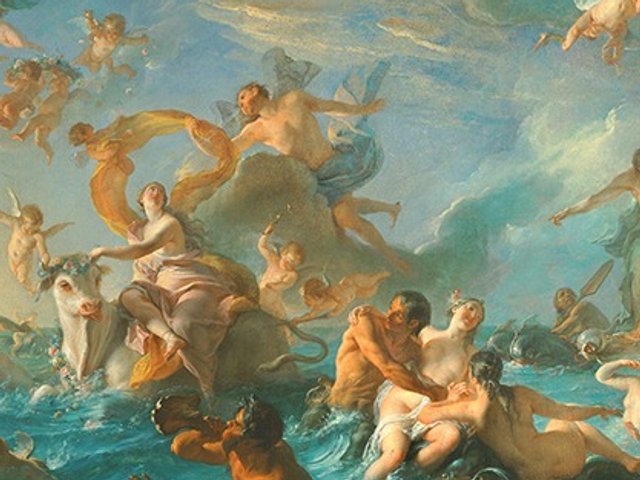New York
A sequel of sorts to the American Rococo exhibition held in Los Angeles and New York in 1992 "Classical taste in America: 1800-1840" is at the Mint Museum of Art, Charlotte, North Carolina (until 13 March). Although Neo-classicism was already firmly entrenched in Europe by the time of the conclusion of the War of Independence, the young republic eagerly embraced its motifs and forms, finding in the arts of ancient Greece and Rome a perfect compliment to its stated moral goals. These ancient civilisations were held to be uncorrupted models of democracy, and the style derived from the academic study of their art and architecture acquired deep political resonance in America.
The principal promoters of Neo-classicism in America were Thomas Jefferson and Joseph Bonaparte, Napoleon's brother. Jefferson's erudition and awareness of European trends (he was the first American to respond enthusiastically to David) spread the classical revival architecturally, while as Secretary of State he planned the federal city of Washington and commissioned Canova to sculpt a classically attired statue of George Washington, noting that, "As to the style or costume, I am sure the artist, and every person of taste in Europe would be for the Roman .... Our boots and regimentals have a very puny effect". However, when Horatio Greenough essayed another, more extreme Neo-classical statue of Washington, seated and semi-nude as the god Zeus, most Americans were appalled.
Joseph Bonaparte came to the United States as a political exile, settling in Bordentown, New Jersey in a luxurious mansion filled with the latest high-style Neo-classical furniture and decorative arts (and a fine collection of Old Masters including Titian's "Tarquin and Lucretia" now in the Fitzwilliam). He set an example as a tastemaker, and his home was imitated by many of the leading Americans who visited.
"Classical taste in America" offers a good survey of the American fascination with and interpretations of the style, from furniture by French immigrant Charles-Honoré Lannuier and by Duncan Phyfe to paintings by Gilbert Stuart, Rembrandt Peale and the underrated Thomas Sully, from silver by Thomas Fletcher and Obadiah Rich to fabrics, ceramics and glass.
Unfortunately, American Neo-classical sculpture is rather underrepresented; Thomas Cawford is shown but, surprisingly, there is nothing by Hiram Powers. It was in this field that Amerian artists first made an impact on Europeans, their works being judged their equal. The exhibition travels to the Museum of Fine Arts, Houston (1 May-24 July).


